Author Examines the Legendary 1968 Harvard-Yale Game
| Published: 11-30-2018 10:01 PM |
Assassins had taken the lives of charismatic leaders Martin Luther King Jr. and Bobby Kennedy. The Vietnam War had bitterly divided the country, with antiwar protests increasingly pitting younger Americans versus older ones. Outside the Democratic National Convention in Chicago in August, the streets became a violent battleground between protesters and police. Many African Americans seethed at King’s murder and the continued prejudice they faced, and riots erupted in cities across the country.
“In looking back ... I’d forgotten how close to fracturing we came that year as a nation,” says George Howe Colt. “It was black versus white, young versus old, hippie versus hardhat, long hair versus short hair — very much ‘Which side are you are on?’ ”
Colt remembers some of that time pretty vividly; the Whately, Mass., writer and journalist was 14, just starting to grow his hair a little longer, listening to rock music (he got The Beatles’ White Album for Christmas that year) and becoming more and more aware of the turmoil taking place in the larger world around him.
But Colt, a finalist for a National Book Award for his 2003 book The Big House, was also a sports nut, whether it meant playing or watching sports, keeping track of statistics or “avoiding doing my homework by watching the NFL doubleheader on Sunday, and going out to play touch football at halftime with my brothers and friends.”
For Colt, who grew up in Dedham, Mass., there was no bigger sporting event than the annual Harvard-Yale football game, something he attended religiously every year with his father, a Harvard alum, and his mother and brothers. And among those games, there was none bigger than the 1968 face-off — one that famously spawned the headline in The Harvard Crimson “Harvard beats Yale, 29-29.”
Now, in his new book, Colt has revisited the historic game, using it as central narrative for a story that examines how the nationwide cultural clashes and confrontations played out on two elite college campuses, and how the young football players on both teams dealt not just with the pressure of a huge game but an uncertain future in a country that seemed to be spinning off its axis.
The Game: Harvard, Yale, and America in 1968 also looks at how two of the oldest universities in the country — bastions of wealthy, white prep-school graduates — began changing in the 1960s, taking in more public school and low-income students, then slowly opening their doors to more African-American students and faculty. And through extensive interviews with many of the former football players, Colt offers portraits of young men who reflected that increasing diversity: rich and poor, African American, white, Jewish, even a Vietnam veteran.
Article continues after...
Yesterday's Most Read Articles
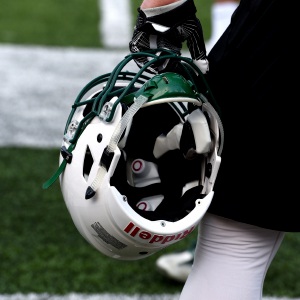 Football helmet maker buys Lebanon’s Simbex
Football helmet maker buys Lebanon’s Simbex
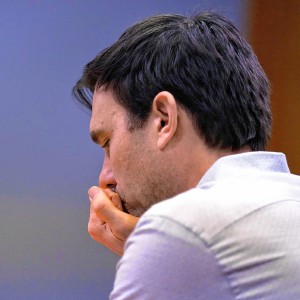 James Parker granted parole for his role in Dartmouth professors’ stabbing deaths
James Parker granted parole for his role in Dartmouth professors’ stabbing deaths
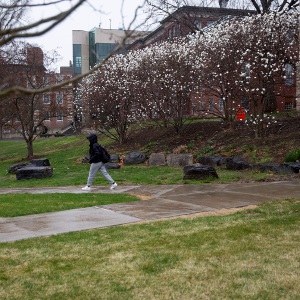 Zantop daughter: ‘I wish James' family the best and hope that they are able to heal’
Zantop daughter: ‘I wish James' family the best and hope that they are able to heal’
 Kenyon: Dartmouth alumni join union-busting effort
Kenyon: Dartmouth alumni join union-busting effort
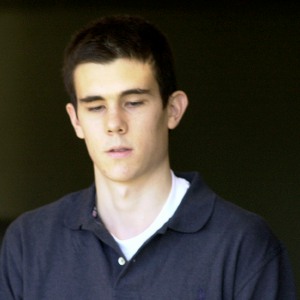 Parker up for parole more than 2 decades after Dartmouth professor stabbing deaths
Parker up for parole more than 2 decades after Dartmouth professor stabbing deaths
 Through new school partnerships, CRREL seeks to educate young scientists
Through new school partnerships, CRREL seeks to educate young scientists
“I’d always wanted to write a sports book — so much of my brain is still taken up by mental space for football stats and baseball stats,” Colt says with a laugh. “But I’m also interested in writing about the ’60s. I thought this could be a marriage of the two.
“My goal was to show what these players were like at age 18, 19, 20 and 21, and how they dealt with 1968,” he adds. “I grew up going to these (Harvard-Yale) games, and the Harvard players were heroes to me … It was fascinating to find out about their backgrounds and their thoughts at the time.”
Colt, a former journalist for Life magazine and the author of four books, also discovered a rich vein of Harvard and Yale students who went on to become major public figures. Before he was a movie star, Tommy Lee Jones was a taciturn offensive guard and budding thespian at Harvard, and one of his suite-mates was future U.S. senator and vice president Al Gore. Yale fullback Bob Levin had a girlfriend from Vassar College by the name of Meryl Streep, who before becoming one of the greatest actors of her generation had been a high school cheerleader who “loved football.”
Also at Yale was a student named Garry Trudeau, who began a comic strip in the Yale Daily News called “bull tales,” built largely around Yale’s star quarterback, Brian Dowling. Dowling’s pen-and-ink alter ego was “B.D.”, a quarterback who never took his helmet off (and didn’t until 2004, over 30 years after Trudeau had turned “bull tales” into his nationally syndicated Doonesbury cartoon).
Making a cameo as well is George W. Bush, who as a Yale senior in 1967-68 got into trouble with police after a 1967 Yale football win at Princeton University. As Colt relates, an “inebriated” Bush climbed onto one of the Princeton goalposts following Yale’s victory and refused to come down.
And the 1968 Harvard-Yale game itself, which Colt covers in three separate chapters (but not until page 243), has long been considered one of the most memorable college football games in history. It was the final game of the season, and both teams were undefeated; Yale was a legitimate powerhouse, with stars like Dowling and running back Calvin Hill (both later played in the NFL, where Hill became a star halfback for the Dallas Cowboys), while Harvard had a tough defense and scrappy offense.
Yale, though, was expected to dominate the game, and did — for about 56 minutes, until Harvard staged an unbelievable comeback to tie the game with no time left on the clock.
“There was just this amazing set of circumstances, a confluence of lucky bounces and bad calls, unexpected injuries to players, to bring about this tie,” says Colt. “And it’s a tie in an age that’s so dichotomous, so black and white, and here’s this truce, this coming together, even if Yale thought of it as a defeat. It was like this moment of peace and celebrating as Americans in an otherwise pretty horrible year.”
The Harvard-Yale football rivalry dates back to the 1870s, and though Colt says football is no longer as big at either school as it was in 1968 — the story of that year’s game was on the front page of The New York Times sports section — the annual clash between the Harvard Crimson and the Yale Bulldogs is still a major event for alumni and a good number of students. But Colt says he hadn’t planned on writing about the 1968 game until he saw a documentary on it about five years ago.
As he explains, he and his wife, Anne Fadiman (a fellow writer who won a 1997 National Book Critics Circle Award for her nonfiction book The Spirit Catches You and You Fall Down), were looking to relax after a long day and turned on their TV on a Friday evening. On Netflix, they came upon Kevin Rafferty’s 2008 film Harvard Beats Yale 29-29, which featured interviews with many of the former football players as well as footage from the 1968 contest.
They found the film riveting, Colt says, and he and his wife stayed up late afterward talking about it and what they remembered of the late 1960s, from Vietnam to the civil rights and women’s movements and the changes they later saw at Harvard, like coeducation (both are Harvard alums, and Fadiman now teaches nonfiction writing at Yale).
“And then I woke up the next morning and said ‘I need to write about this,’ ” says Colt.
Rafferty generously shared his contact information with him, Colt adds, and he eventually interviewed 54 former players, some more extensively than others. He’s used that to create rich profiles of people like Levin, the Yale fullback, who was an intense competitor — “On the field, he looked like he wanted to kill you,” one teammate said of him — but also a thoughtful guy who tutored low-income kids in New Haven and was increasingly opposed to the Vietnam War, even though his father was a retired army officer.
Then there’s Pat Conway, a Harvard safety who at 24 was considered the “old man” of the squad. A working class kid from Haverhill, Mass., he’d left Harvard midway through his junior year in 1966 because of academic problems. To atone for what he saw as his failure, he joined the Marines — and in early 1968, he was trapped for weeks with other U.S. troops at the bloody siege of Khe Sanh, near the demilitarized zone in Vietnam. One night, North Vietnamese mortar rounds flung him into the air; he landed upside down, buried in dirt and debris. Another time he was spattered with gore from a fellow Marine who was hit just down the line; he was also wounded by shrapnel.
Conway survived, though, returning to Harvard in late summer 1968 and rejoining the football team. At safety, he played with reckless abandon, tackling opponents with airborne, helmet-first hits. He figured the risk of injury from such “spearing” was nothing compared to having nearly being blown to pieces by artillery fire.
Even when he wasn’t able to talk to individual players, Colt has used the recollections of others to offer well-developed portraits, like that of John Tyson, an all-Ivy League Harvard safety and African American who gave up football to devote himself to black activism. During his senior year, Tyson helped lead an effort to bring more black students and faculty to Harvard and to start an African-American studies department.
The laconic Tommy Lee Jones, meantime, who had spent some of his summers working on oil rigs in his native Texas, had a few tart words for his teammates when they complained about the sticky heat in Cambridge during preseason workouts: “You (bleeps), it’s a hundred degrees in Texas.”
The Game covers other events that roiled the Harvard and Yale campuses during this time, such as a student takeover of an administration building at Harvard in spring 1969 to protest the campus ROTC program.
University officials brought in busloads of state police to throw the students out, and one football player, defensive tackle Rick Berne, who was part of the protest (a cop whacked him in the groin with his baton) remembered thinking that the police, in riot gear that included padded uniforms and blue helmets, “looked like 250-pound linemen.”
The description of the Nov. 23 game itself makes for fine drama, with enough plot twists for a movie: Yale’s offense moving up and down the field with ease but fumbling the ball away six times; key players getting injured; Harvard’s talented but self-doubting backup quarterback, Frank Champi, driving his team to a touchdown with seconds left on the clock. The last-minute tie left Harvard players and fans delirious with joy, while many of their Yale counterparts — because they’d expected an out-and-out victory — actually felt like they’d lost the game. (Hence the taunting headline in The Crimson)
Colt says he wanted to write about football in a way that would make the story interesting and accessible to non-sports fans.
“That was my hope, that all this would come together,” he says. “I’ve been pleased that non-football fans, even my wife, have said (about the game), ‘It’s so thrilling.’ ”
One thing that surprised him as he worked on The Game was the way the events he chronicled came to seem relevant today — a feeling many of the former players he talked to shared, he says.
“I thought this was going to be looking at 1968 in a ‘preserved in amber’ kind of way — here’s a portrait of a year long ago that maybe has no relevance to today,” he says. “But starting about three years ago, with Black Lives Matter and Trump’s election, the #MeToo movement, all the polarization — it’s like echoes of the past. It’s 1968 all over again.”
That’s a disturbing thought, he notes, but he’s cheered by something one of his wife’s students, who read an advance copy of the book, told him.
“He said ‘George, I had no idea things were this bad in 1968. But the fact that the country got through it makes me think we can do it again.’ ”
<sbull2 value="sbull2"><text xmlns="urn:schemas-teradp-com:gn4tera"></text></sbull2>
Steve Pfarrer can be reached at spfarrer@gazettenet.com.

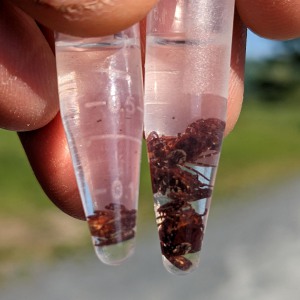 Out & About: Vermont Center for Ecostudies continues Backyard Tick Project
Out & About: Vermont Center for Ecostudies continues Backyard Tick Project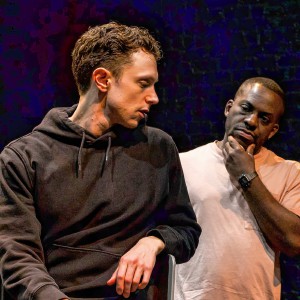 Art Notes: After losing primary venues, JAG Productions persists
Art Notes: After losing primary venues, JAG Productions persists 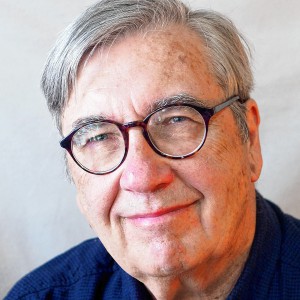 Over Easy: Marvels in the heavens, and in the yard
Over Easy: Marvels in the heavens, and in the yard 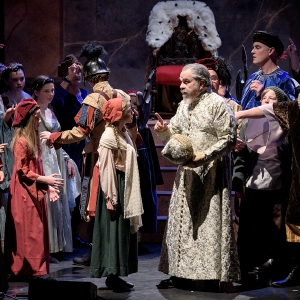 Amid financial difficulties, Lebanon-based Revels North cancels midwinter show
Amid financial difficulties, Lebanon-based Revels North cancels midwinter show 
